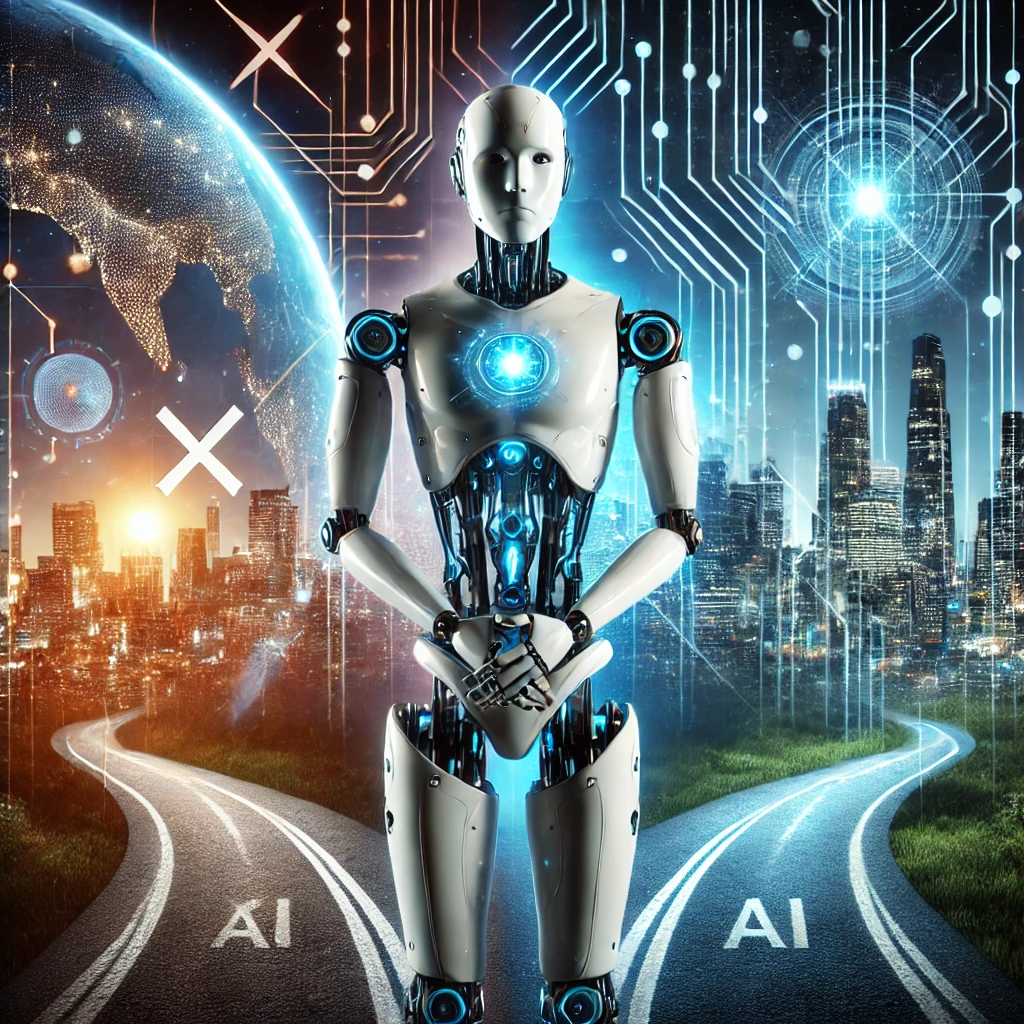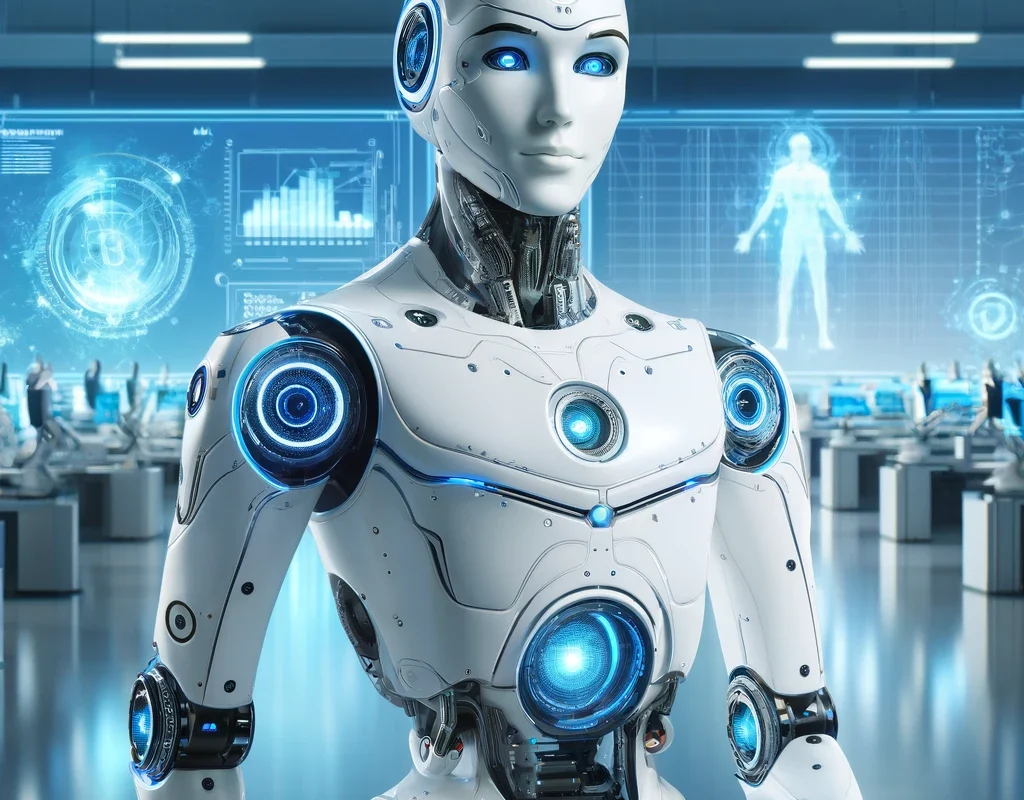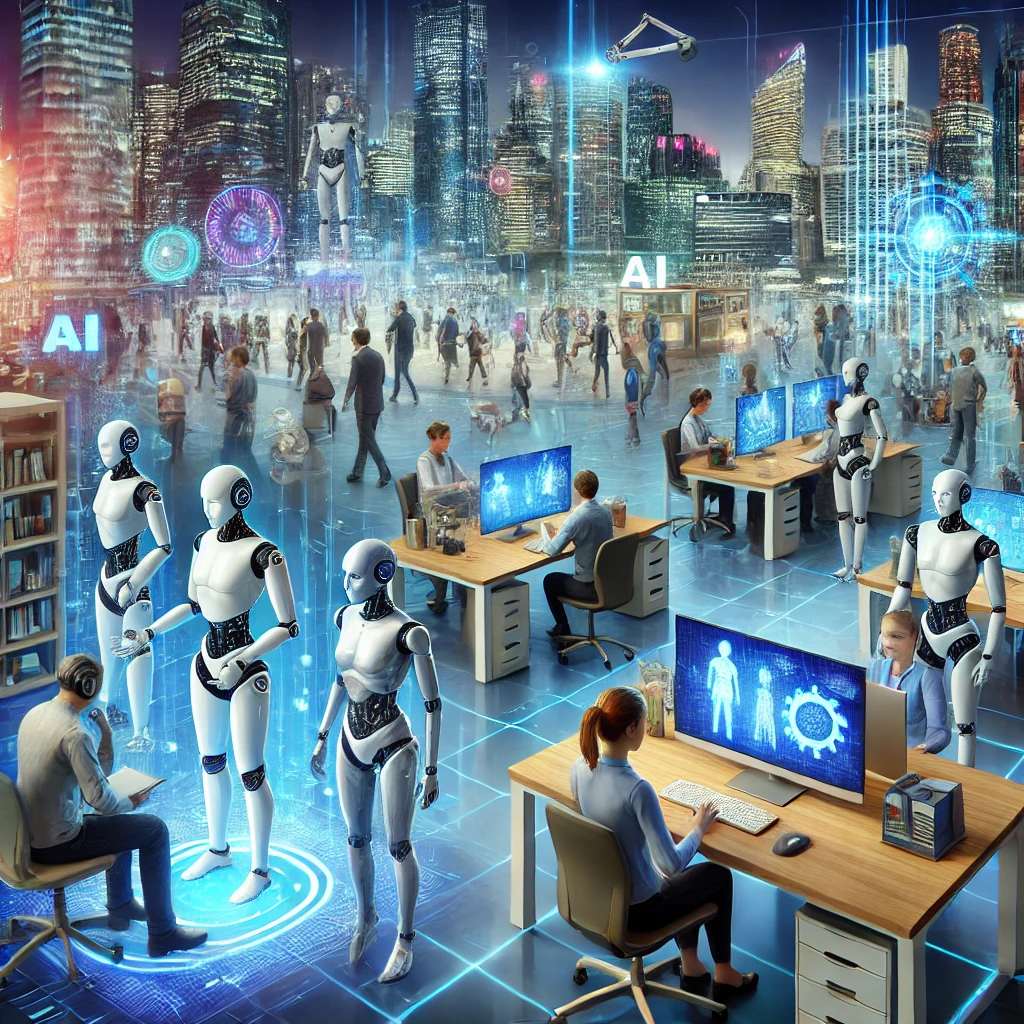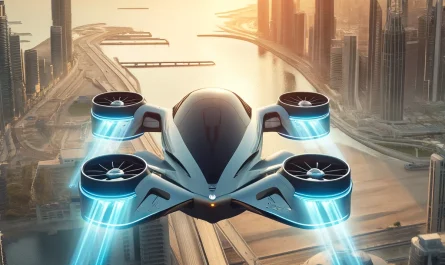Table of Contents
- 1 Introduction: The Future of Humanoid Robotics Has Arrived
- 2 What Is Protoclone? How This Robotic Works and What It Can Do
- 3 How Does Protoclone Compare to Other Humanoid Robots?
- 4
- 5 Preparing for the Future: Staying Competitive in the Age of Humanoid Robotics
- 5.1 Focus on Skills That AI Cannot Easily Replicate
- 5.2 Upskill & Reskill for AI-Powered Roles
- 5.2.1 🚀 Learn AI, Robotics, and Automation Fundamentals
- 5.2.2 📊 Develop Data Literacy & Analytical Thinking
- 5.2.3 🎭 Enhance Creativity, Observational Skills & Adaptability
- 5.2.4 🧠 Master Interdisciplinary & Cross-Industry Knowledge
- 5.2.5 🌍 Develop Leadership, Emotional Intelligence, and Human-Centric Decision-Making
- 5.2.6 Why Upskilling Matters Now More Than Ever
- 6 Final Thoughts: Are We Ready for AI-Humanoid Robots?
Introduction: The Future of Humanoid Robotics Has Arrived
Imagine walking into a café and being served by a humanoid robot that moves just like a human, handling a coffee cup with precision, responding to your requests with lifelike gestures. This isn’t a scene from a sci-fi movie—it’s the reality we are stepping into, thanks to Protoclone, the latest humanoid robot designed to mimic human movement.
A viral video of Protoclone, the first humanoid from Clone Robotics, shows the robot’s limbs twitching, flexing, and moving eerily like a human body. Unlike traditional robots built for factory work, Protoclone introduces lifelike, dexterous movement, enabled by its 1,000 synthetic muscles and AI-powered humanoid robotics.
This marks a turning point in humanoid research. For years, we believed that AI humanoid robots would primarily replace office jobs, but not those requiring fine motor skills, dexterity, or precision craftsmanship. Protoclone challenges that assumption. If humanoid robots can now resemble human movement and use tools with human-like accuracy, are any jobs truly safe from automation anymore?
What Is Protoclone? How This Robotic Works and What It Can Do
1. How Protoclone Is Different from Other Robots
Protoclone is not just another humanoid robot—it is a highly advanced humanoid robot designed to perform a wide variety of tasks that were once thought to be exclusive to humans. Here’s what makes it different:
✔ Artificial Muscles Instead of Motors – Uses 1,000 synthetic muscles, allowing it to mimic human movement.
✔ Human-Like Skeleton – Modeled after 206 bones, closely replicating human-robot interaction.
✔ Smart Sensors & Machine Learning – Equipped with AI technology to interact with humans and adjust grip strength.
✔ Cooling System – A unique water-based development platform to prevent overheating, similar to human sweating.
2. Real-World Applications for Protoclone
Protoclone is still in research and development, but humanoid robots are expected to take over roles in various industries:
🔹 Service Robots & Customer Interaction – Like Ameca from Engineered Arts, Protoclone could interact with people in hotels, malls, and airports.
🔹 Manufacturing & Precision Assembly – Inspired by Optimus, Atlas Humanoid Robot, and Agility Robotics, Protoclone could perform factory work and climb stairs.
🔹 Healthcare & Elderly Care – Similar to ASIMO, Protoclone could assist in domestic tasks and help elderly individuals.
🔹 Robotic Locomotion & Dexterity – Unlike rigid industrial robots, Protoclone’s degrees of freedom make it capable of handling delicate objects with lifelike precision.
Protoclone is an AI-powered humanoid still in development, with Clone Robotics planning to launch 279 units in 2025.
How Does Protoclone Compare to Other Humanoid Robots?
The robot market for humanoid robotics is expected to grow significantly by 2024-2025, with multiple humanoid projects in development. Here’s how Protoclone stacks up against major competitors:
| Robot Name | Company | Primary Use | Key Features |
|---|---|---|---|
| Protoclone | Clone Robotics | General-Purpose Humanoid | Lifelike muscles, human-robot interaction, AI-powered learning |
| Tesla Optimus | Tesla | Industrial & Factory Work | Factory automation, repetitive tasks, two legs, bipedal robots |
| Boston Dynamics Atlas | Boston Dynamics | Agile Robotics | Atlas Robot with parkour, advanced locomotion, range of applications |
| Sanctuary AI Phoenix | Sanctuary AI | Dexterous AI Worker | Human-like hand precision, mobile robots, interact with humans |
| Figure 02 by Figure AI | Figure AI | Workplace Automation | AI-powered humanoid, research and development, range of tasks |
🔹 Unlike Atlas Humanoid Robot, which is built for agility and locomotion, Protoclone focuses on human dexterity.
🔹 Unlike Tesla Optimus, which prioritizes factory automation, Protoclone aims for robotic interaction with people.
🔹 Unlike Ameca, which is designed for expressive human-robot interaction, Protoclone is a bipedal robot capable of dexterous tasks.
For more details:
- Boston Dynamics Atlas
- Tesla Optimus
- Figure AI – Figure 02
- Agility Robotics – Digit
- Ameca by Engineered Arts
Preparing for the Future: Staying Competitive in the Age of Humanoid Robotics
As AI humanoid robots resemble humans more closely and use tools effectively, individuals must adapt to remain relevant. Here is how:
Focus on Skills That AI Cannot Easily Replicate
While AI-powered humanoid robots can perform complex tasks, they lack the ability to learn from reflection, human interactions, and real-world experiences in the way that humans do. True intelligence goes beyond data processing—it involves understanding context, emotions, relationships, and strategic thinking that AI struggles to replicate.
✔ Emotional Intelligence (EQ) & Human Connection
While AI can analyze speech patterns and simulate empathy, it does not truly understand human emotions, motivations, or cultural nuances. Strong interpersonal skills, active listening, and emotional intelligence remain uniquely human strengths in leadership, customer service, and negotiation.
✔ Creative Problem-Solving & Strategic Thinking
AI follows programmed models, optimizing based on existing data. However, humans can think critically, anticipate future challenges, and devise entirely new approaches beyond historical data. Innovative business strategies, crisis management, and long-term planning are human-driven skills AI cannot fully master.
✔ Learning from Reflection & Experience
Humans learn through self-reflection, interactions with others, and continuous self-improvement—something AI cannot do on its own. By engaging in deep discussions, analyzing past mistakes, and identifying better ways to streamline businesses, humans refine their expertise over time in ways that AI cannot autonomously replicate.
✔ Observation & Adaptability
AI processes large data sets, but human intuition, observational skills, and adaptability in unpredictable situations remain unmatched. Whether it’s a CEO reading between the lines in a negotiation, a doctor recognizing subtle symptoms, or a business leader identifying untapped market opportunities, humans excel at seeing patterns AI might overlook.
✔ Interdisciplinary Thinking & Cross-Industry Insights
A blend of business, artificial intelligence, psychology, philosophy, and human-robot interaction will be key to leading in an AI-driven world. Humans can draw connections across different fields, integrating knowledge from multiple disciplines to create novel solutions and innovations—something AI struggles to do without predefined parameters.
Why These Skills Matter More Than Ever
In a world where automation and humanoid robots are becoming increasingly sophisticated, staying competitive means mastering skills that AI cannot replace. By focusing on human creativity, emotional intelligence, strategic thinking, and observational learning, individuals can thrive alongside AI rather than being replaced by it.
Upskill & Reskill for AI-Powered Roles
To stay competitive in an era where AI humanoid robots and automation are advancing rapidly, individuals must continuously upskill and reskill. While AI is becoming more proficient at automation and decision-making, humans excel at adaptability, reflection, and innovation. The key to thriving in an AI-driven world is to master the skills that complement AI rather than compete with it.
🚀 Learn AI, Robotics, and Automation Fundamentals
Understanding the capabilities, limitations, and real-world applications of artificial intelligence, humanoid robotics, and machine learning will be crucial for every industry. Whether you’re in finance, healthcare, or logistics, AI-powered decision-making and automation are becoming standard. Having basic AI literacy allows you to work alongside AI rather than being replaced by it.
📊 Develop Data Literacy & Analytical Thinking
AI can process vast amounts of data, but humans must interpret, question, and apply insights strategically. Learning how to analyze AI-generated data, spot biases, and make human-centered decisions will be critical across industries, from marketing and HR to supply chain management and finance.
🎭 Enhance Creativity, Observational Skills & Adaptability
While AI can optimize existing processes, it lacks the ability to reflect, innovate, and adapt to entirely new situations. Humans must continuously develop creative thinking, problem-solving, and observational skills to identify opportunities AI might overlook. Whether it’s streamlining a business, spotting inefficiencies, or predicting customer needs, human intuition and experience remain irreplaceable.
🧠 Master Interdisciplinary & Cross-Industry Knowledge
As humanoid robots and AI-powered automation expand into multiple sectors, professionals must broaden their expertise across disciplines. Blending AI knowledge with psychology, business strategy, philosophy, and human-robot interaction will be essential for developing ethical AI systems, leading innovation, and ensuring technology serves human needs.
🌍 Develop Leadership, Emotional Intelligence, and Human-Centric Decision-Making
AI lacks the ability to lead teams, resolve conflicts, and build trust. People who master leadership, negotiation, and emotional intelligence will always have an edge in the workforce—especially in roles that involve human-robot interaction, customer engagement, and strategic planning.
Why Upskilling Matters Now More Than Ever
With AI-powered humanoid robots expected to grow in usage by 2024-2025, individuals must proactively prepare for an AI-driven workforce. By learning AI fundamentals, strengthening human-centric skills, and developing creative problem-solving abilities, professionals can position themselves as valuable leaders in the age of artificial intelligence and automation.
Final Thoughts: Are We Ready for AI-Humanoid Robots?
The rise of AI-powered humanoid robots like Protoclone is not just a technological breakthrough—it is a fundamental shift in how humans and machines interact. The robot market is expanding rapidly, and automation, AI, and humanoid robotics are no longer confined to factories and research labs. They are entering real-world applications, transforming industries, and redefining the future of work.
🚀 But here’s the real challenge: Will we adapt fast enough?
Unlike previous industrial revolutions, where change happened gradually, today’s AI advancements are accelerating exponentially. Humans who fail to adapt will be left behind. This is no longer about whether AI will replace jobs—it is about how we position ourselves to lead, innovate, and work alongside AI.
How Can You Stay Ahead?
✔ Stay informed and proactive
The robots of 2024 and 2025 are not the robots of yesterday. Understanding how AI and humanoid robots are evolving will be essential for future success.
✔ Master what AI cannot replicate
Creativity, critical thinking, emotional intelligence, and adaptability remain uniquely human skills. Those who excel in these areas will always be in demand.
✔ Embrace AI as a tool, not a threat
The most successful professionals will be those who learn how to integrate AI, robotics, and automation into their work rather than resisting it.
💡 AI-powered humanoid robots are not the future—they are the present. The only real question is:
Will you evolve with the technology, or will you be left behind?
Now is the time to take action, stay ahead, and shape the AI-driven future on your terms. 🚀




